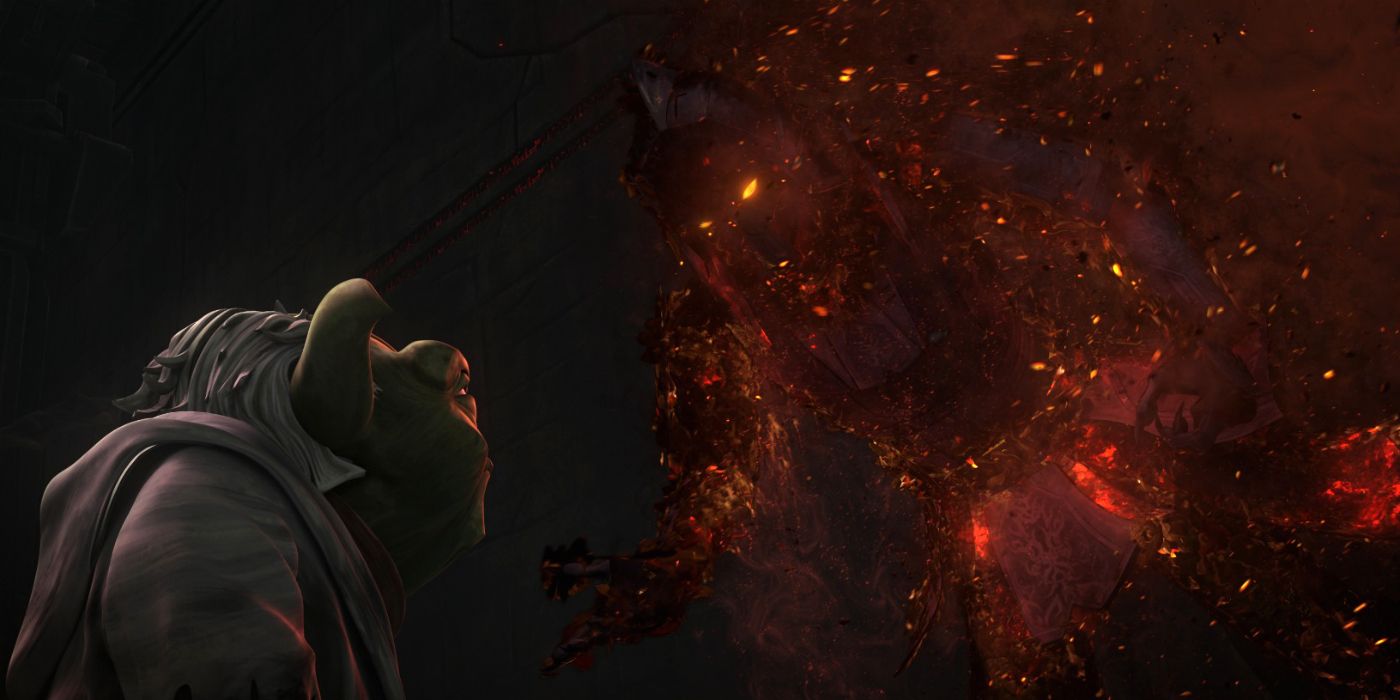Star Wars: The Rise of Skywalker changed the lore of the Sith Order with the introduction of the Force Dyad into Star Wars canon, complicating the Sith’s famous Rule of Two. Darth Sidious, and subsequently the Sith, are the main villains of the Star Wars Skywalker Saga, with Palpatine’s machinations driving the conflict of all nine movies. For most of the saga, the Sith adhered to the Rule of Two, decreeing that only two Dark Lords can exist at any given time as a means for them to remain hidden, controlling the galaxy from within the shadows. Palpatine and Darth Vader are easily the most famous example of this rule within the film franchise.
In the Sith Order’s original Legends-era backstory, Darth Bane created the Rule of Two after the disastrous Ruusan campaign nearly ended the Sith Order, whose history was rife with betrayals and in-fighting. Bane resolved to ensure that only the strongest Sith could be worthy of the Dark Lord title, and by keeping their numbers at exactly two, their inevitable betrayals would be kept in check—although the effectiveness of the rule is up for debate. With a Sith master constantly seeking to replace their current apprentice with a better one and their apprentice trying to kill and usurp their master, the Sith gradually ascended in power, working in secret to undermine the Jedi and take over the galaxy.
The Star Wars canon universe retained the broad strokes of the Rule of Two’s Legends-era backstory until The Rise of Skywalker introduced the Force Dyad. As revealed in the 2021 reference book, Star Wars: The Secrets of the Sith, the Rule of Two’s history has been retroactively changed to account for the Force Dyad. Palpatine describes the “Doctrine of the Dyad” as ancient Sith lore that predates the Rule of Two. Palpatine dismisses Bane’s rule as a pale imitation of the Doctrine of the Dyad, complicating the rule’s once straightforward history and doing a disservice to the Sith Order in canon.
A Force Dyad is formed when two beings share a bond so strong that the Force itself treats them as one. When connected through the Force, the two parts of a Dyad are imbued with powers that even the most well-trained and intrinsically powerful Jedi and Sith can’t possess, such as teleporting objects across the galaxy and transferring life, allowing for resurrections. The Sith craved this power above all else, as it represented the pinnacle of their potential strength in the dark side. Secrets of the Sith and the Rise of Skywalker’s novelization re-contextualize the Rule of Two as an attempt to create a Dyad.
In canon, the Rule of Two existed before the Sith Order’s seeming destruction over a thousand years before the Skywalker Saga. Through the Rule of Two, a Sith master and apprentice would attempt to create a Dyad artificially, but this has never been successful. Unfortunately, this overwrites the far more pragmatic Rule of Two origins in Legends, which coincided with the original and prequel trilogies far more closely.
In Legends, the Rule of Two was a pragmatic response to the Sith Order’s tendency to fight amongst each other as much as they do against the Jedi, and it mandated that the Sith replace their initially brutish tactics with more finesse and manipulation. The Rule of Two proved effective, as Bane’s Sith Lord lineage had their revenge when the Empire rose and enacted the Jedi Purge. In canon, rewriting the history of the Rule of Two to support the Dyad, unfortunately, lessons the Sith Order’s pragmatism and ingenuity, and makes their victory in the Star Wars prequel trilogy no longer the result of clever reinvention and strategy.



